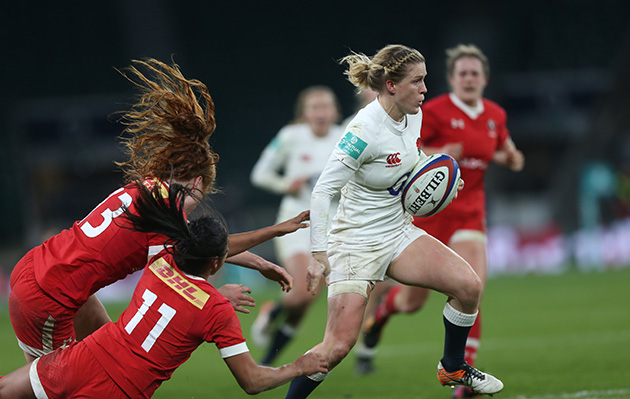The Glasgow and Scotland scrum-half gives his top attacking tips
George Horne: How to be a sniping nine
George Horne made his Scotland debut against the USA in 2018 having impressed for Glasgow Warriors with his sniping style. Here are his top tips for being an attacking threat from scrum-half…
Right time
“Before making a break around the edges, you want a positive ruck from your team; a good carry and clearout, so you’ve got fast ball. If the opposition are not set in defence, it’s a chance to get on the front foot when they’re not ready.”
Show of pace
“You need a burst of acceleration to get through the gap. We do a lot of speed work in the gym, things like jump squats and resistant sled sprints. That resistance helps to build stride length. Use footwork to get past defenders as well as speed.”
The mismatch
“Vision is a big part of scrum-half play. It’s about seeing who you’re up against. If it’s the tight five, the larger guys, in or around a ruck, you should beat them for speed. Shoulders turned out is another good read. If a player thinks you’ll be passing to ten or a forward, it’s a chance to get outside their soft shoulder and accelerate through the gap as they won’t have time to get you.”
MORE SKILLS ADVICE…
Ben Youngs: How to throw a dummy
Leicester and England scrum-half Ben Youngs explains how…
Danielle Waterman: How to sidestep
England Women’s full-back Danielle Waterman gives her top…
Matt Toomua: How to find space at centre
The Australia back offers tips on exploiting space…
Element of surprise
“People tend to think you should only go for a gap in the attacking half, but deep in your territory they may expect you to exit and it’s a great opportunity to catch defences unaware. Support lines are also important – your ability to follow play and take the ball on the inside means you may score from a second touch. Your work-rate and fitness must be good so you can run those lines.”
This article originally appeared in the August 2018 edition of Rugby World magazine.
Every month Rugby World features advice from professional players and coaches on specific skills.
Follow Rugby World on Facebook, Instagram and Twitter.








